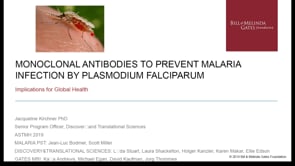Last Updated: 28/05/2025
PTEX mechanism in malaria parasite effector protein export and host cell subversion
Objectives
This proposal will answer key questions about the Plasmodium Translocon of EXported proteins (PTEX) export mechanism to determine the basis for host cell subversion and provide new targets to combat this devastating pathogen.
Malaria disease remains a serious public health problem. Progress in Malaria control has slowed in recent years while resistance to frontline antimalarials is emerging in the most afflicted regions, underscoring a pressing need for deciphering fundamental parasite biology to provide novel therapeutic strategies. This obligate intracellular parasite exports a battery of effector proteins out of a vacuolar niche to drastically remodel its host cell, a process that depends on the Plasmodium Translocon of EXported proteins (PTEX). PTEX is built on a vacuole nutrient pore formed by EXP2 which is further functionalized by the adaptor PTEX150 and AAA+ chaperone HSP101 to form the effector translocon. PTEX has emerged as a novel drug target owing to its essential role in blood stage parasite survival and disease pathogenesis but it is unknown how translocon cargo is identified or how the complex is assembled and regulated to perform its function. Recent results suggest HSP101 identifies export-destine cargo in the parasite ER and then brings it to the vacuole where assembly into the PTEX complex stimulates HSP101’s unfolding activity to drive membrane translocation into the erythrocyte. Importantly, while a similar export process is expected to occur in the initial liver infection that establishes the blood stage, only EXP2 and PTEX150 are present in the intrahepatic vacuole but not HSP101. This implies that PTEX components mediate protein export into both erythrocytes and hepatocytes but that mechanistic distinctions have evolved to meet the demands of subverting these remarkably different host cells. In support of this, we recently determined that EXP2 is critical to intrahepatic parasite development, clearly showing for the first time that PTEX components are also functional in the liver stage vacuole. We hypothesize that EXP2/PTEX150 constitutes a minimal effector translocon for vertebrate host cell subversion that is further adapted by HSP101 to meet the unique demands on protein export to remodel the erythrocyte. Aim 1 will determine the basis for PTEX cargo selection in the blood stage by dissecting the ER-localized function of HSP101 along with the role of a newly discovered HSP101-interacting ER protein. Aim 2 will define features required to form PTEX and identify the interaction that stimulates HSP101 unfolding activity in the assembled translocon complex using a photoreactive unnatural amino acid crosslinking system. Finally, Aim 3 will uncover the HSP101-independent function of EXP2/PTEX150 in the liver and identify novel exported effectors that enable hepatocyte subversion to establish the blood stage.
Jul 2023 — Jun 2028
$366,950


